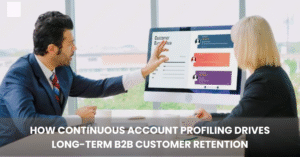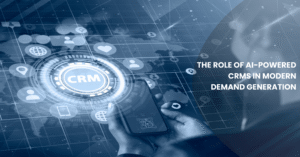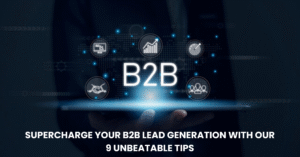In today’s competitive and dynamic age, serving and retaining customers isn’t merely about providing solutions. It is also about evaluating how relevant your solutions are and whether they are demonstrating the value your customers expect. This is where continuous B2B account profiling comes into play. So, let’s see what it is, why it is significant, and how it can help you retain your B2B clients in the long run.
What is a B2B Account Profile and Why is it Crucial in the Modern Age?
Continuous account profiling involves collecting, updating, and evaluating customer data to understand their evolving requirements, goals, challenges, and behaviors.
It is a strategically more competent approach than conventional one-time onboarding assessments or annual business reviews.
Amidst the continuously evolving business environment, continuous profiling provides a real-time view of your customer’s journey. It guides proactive actions rather than reactive ones. Instead of assuming (which could be inaccurate), account profiling helps you refine your approach, ensuring better customer support and stronger relationships.
Let’s now delve a little deeper into understanding how continuous B2B account profiling helps drive long-term customer success and retention.
6 Ways Ongoing B2B Account Profiling Helps Retain Customers
From identifying problems proactively to building more enduring relationships, here’s how continuous B2B account profiling helps.
1. Proactive Pain Point Identification
Customer churn doesn’t happen overnight. Even if they do, they are rare. Usually, these churns accumulate through unmet requirements, silent frustrations that build up over a period with unsuccessful transactions, or declining service use.
Continuous profiling involves monitoring different aspects of customer engagement to identify red flags early and work to resolve them. Some of these aspects include;
- Product engagement trends
- Support ticket patterns
- Shifts in client priorities
- Usage anomalies
By monitoring the above, you won’t have to wait until the customer voices their concerns. Instead, you work proactively to resolve them. As a result, you build trust, earn customer appreciation, and retain them for longer.
Build stronger, longer lasting customer relationships through smarter account profiling
2. Personalized Customer Experiences
Unlike B2C, each B2B customer is different. They come from different industries, have varying levels of business volumes, differ in maturity levels, and also have unique KPIs.
When you profile your customer accounts regularly, you can provide tailored training materials, render product guidance support, update onboarding workflows, and offer upsell recommendations. These factors help customers receive an experience knitted around their business. Such experiences encourage customers to be loyal to you.
3. More Value-Based Conversations
Templatized conversations are a complete turn-off in today’s age of personalization. These days, clients can tell whether an interaction is scripted or personalized.
Continuous profiling helps you identify changing customer needs, priorities, and challenges. It paves the way for fresh contexts, updated goals, and recent performance insights. Thus, the process also enables you to align your communication and content to match the latest situations. It helps elevate strategic positioning and reinforce value throughout the customer’s journey with you.
4. Better Product Adoption
Every company makes the best effort to provide a B2B solution. But what if your customers don’t use or underutilize critical features? This can affect customer outcomes!
Continuous profiling helps you highlight what tools customers are using, where adoption is low, and which features can help customers unlock more value.
When you know the answers to these questions, you can help your clients use your solution more effectively with workshops, tutorials, or use-case recommendations.
After this, customers are more likely to achieve more measurable value. When they do it, they can opt for renewals, upgrades, and updates.
5. Relevant Cross-Selling and Upselling Opportunities
In today’s competitive and growth-driven age, you cannot limit customer retention to just keeping your core service active. Instead, you must look to grow the account’s value.
Ongoing account profiling helps you understand a client’s updated technology stack, investment plans, newly started verticals, or recently acquired businesses.
By learning and deciphering what’s happening at your client’s end, you can align your upselling and cross-selling strategies, turning these opportunities into new revenue streams.
6. Optimal Resource Allocation
The attention levels vary with the account type. Account profiling helps you layer the client’s profile with their historical data. It enables you to segment your customers more effectively, ensuring you allocate resources to each wisely and optimally.
Thus, each customer receives the attention and time they deserve based on their business volume, priorities, criticality, and evolving requirements.
Serve Your Customers Better, Longer with DemandFluence’s B2B Account Profiling
Acquiring customers is challenging. But retaining them requires even more effort and a strategic viewpoint. At Demand Fluence, we assist you in performing continuous account profiling that keeps you informed about your customers. Our experts also walk the extra mile to help you identify the right strategies based on the changing expectations, priorities, and challenges of your clients to cater to them more effectively.
So, why stagnate customer support when you can upgrade it? Be a more competent customer partner with DemandFluence. Please email us at hi@demandfluence.com.



























